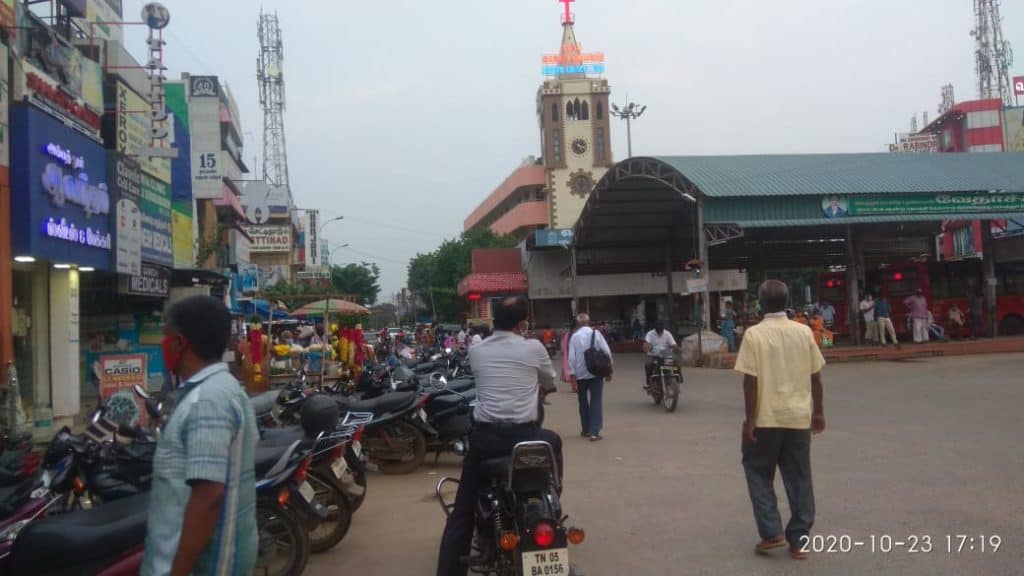Ambattur has the biggest small scale industrial estate in South Asia. The locality is slowly turning into an IT hub and in the past three years, the quality of roads has improved thanks to the many road-laying projects taken up by the Greater Chennai Corporation (GCC).
But, has the quality of life really improved in Ambattur?
Many deep-rooted issues plague civic life at Ambattur. Residents of the zone are still waiting for amenities such as water and sewage connections, despite being included in the Greater Chennai Corporation limits in 2011. Basic rights such as public health and education are still a far cry for the citizens of Ambattur. To cite just one example, there is no Corporation higher secondary school for boys in the locality.
Under the spotlight
A long list of grievances, big and small, emerges when you speak to resident groups of Ambattur. These are some of the major concerns they shared with us:
- Widening of the rail over bridge at Ambattur OT is long overdue. Its absence is causing traffic blocks at this important junction. A multi-departmental project involving state highways, GCC and Southern Railways, it has been in the talks for more than ten years now.
- Many elected representatives made promises of upgrading Ambattur Railway station to a terminus. Forget the terminus, many express trains do not stop at this station that is used by thousands of employees from far-off Arakkonam and Vellore.
- Absence of a vehicular subway at the Ambattur railway station results in passengers dangerously crossing the tracks.
- Besides the Primary Health Care Centre (PHC) Padi that is equipped to treat inpatients (only maternity cases), the other five of them in the zone are only for outpatients. A 200-bed hospital in the zone has been an ask for quite some time.
- Two years ago, five corporation schools in Ambattur were upgraded to high schools. But the infrastructure remains inadequate, as there are not enough laboratories.
- All the 30 ponds and four lakes in Ambattur have been encroached by government and private bodies.

The need for a citizen movement
It is the intensity that varies, but almost every urban neighbourhood in an urban setting is grappling with infrastructural and civic challenges. But unlike other neighbourhoods, a strong civic ecosystem is missing at Ambattur.
“A majority of the citizens here are migrants and others are working class people, who divide their time between work and family life. This becomes a major challenge in imbibing a sense of ownership among citizens,” says Ramalingam R, who has been living here since the late 1960s. Ramalingam, in his seventies now, is part of Ambattur Pasumai Karangal, an organisation that aims to increase greenery in the city by planting saplings in government buildings.
There have been a few positive stories of citizen movements in Ambattur. The 10 active volunteers of Ambattur Pasumai Karangal have planted around 7000 saplings over the past few years. Ooruni Maiyam, another citizen association, collaborated with activists to continuously press for the stopping of two express trains — Sapthagiri Express and Yelagiri Express — at Ambattur. After years of pursuing the issue with Railways, Sapthagiri Express now halts at Ambattur Railway station.
| Active citizen groups in Ambattur Ooruni Maiyam – 9566084540 Ambattur water bodies protection movement – Oragadam Salai Sangam – 9841458575 Ambattur pasumai karangal – 9841405662 |
While there may be some proactive individuals and groups in this part of the city, “the number is very low considering the many grievances that people harbour. Many Resident Welfare Associations (RWAs) in Ambattur have a strong political or religious leaning, or are just inactive,” says Anbazhagan K B, Treasurer, Ooruni Maiyam.
So, here comes the pertinent question: How can citizens of Ambattur be engaged to work towards transformation of their neighbourhoods?
Harnessing citizen power
It has to be a consistent process, says Ranga Prasad, a civic activist, quoting the examples of citizen groups such as Chitlapakkam Rising that have proven the link between citizen participation and infrastructural development. Using social media as a tool, Chitlapakkam Rising questions all that is wrong in this southern suburb: encroached lakes, battered roads, corruption in the civic body and so on.
“All we need is a group of dynamic volunteers who question the lapses. They could bring an issue to public notice through social media (a whatsapp or a facebook group) or complain by writing petitions to the concerned government office. They could motivate many others to follow suit,” says Ranga Prasad.
Identifying issues that masses will relate to is another step. It is the mismanagement of Chitlapakkam lake that brought together hundreds of Chitlapakkam residents. The delay in water and sewage connections pushed citizens of Thoraipakkam to protest as a group. Likewise, residents of Ambattur, or that matter, any locality must figure out the common, deep-rooted issues that affect their day to day lives and unite them.
“Many associations (apartment associations too) in Thoraipakkam are divided on ideologies. What connected us together a a federation is the commonality of our problems. We registered our Federation in March 2019 after many rounds of discussions. It requires at least seven associations to form a federation,” said A Francis, President, Federation of Thoraipakkam Resident Welfare Associations.
Yes in a pathetic condition.The subway work started in villivakkam,korattur is over,even the preliminary work not yet started
The Ambattur Ind estate 3rd main road/telephone exchange road with so much traffic is not laid properly with proper drains,is regularly dug up.